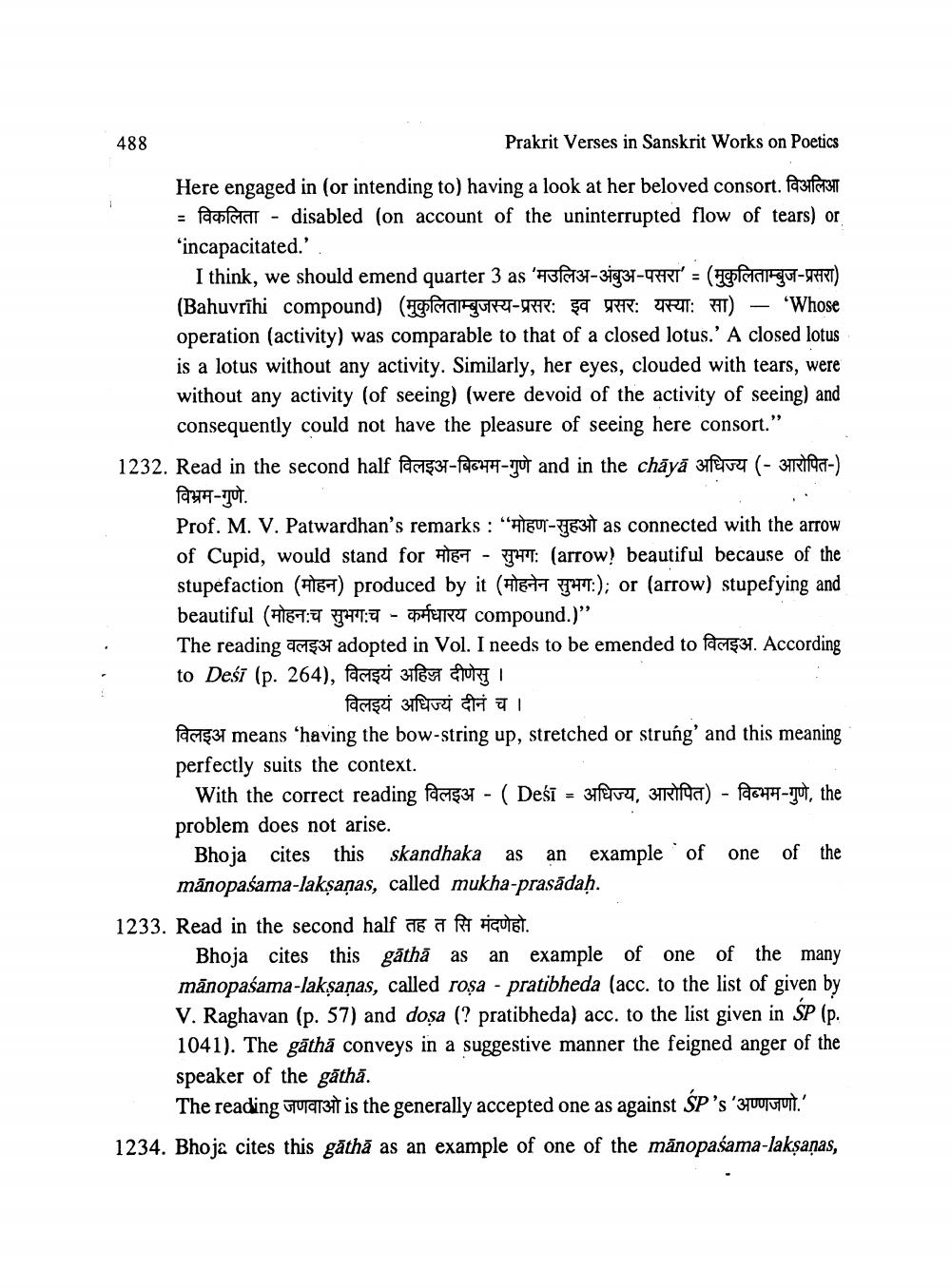________________
488
Prakrit Verses in Sanskrit Works on Poetics
Here engaged in (or intending to) having a look at her beloved consort. fazifer3 = factar - disabled (on account of the uninterrupted flow of tears) or 'incapacitated.' I think, we should emend quarter 3 as 'HET37-31937- RRT = (
HealEUT-RHRT) (Bahuvrīhi compound) (ugfaaieguRI-R: ça per: UIT: ) – 'Whose operation (activity) was comparable to that of a closed lotus.' A closed lotus is a lotus without any activity. Similarly, her eyes, clouded with tears, were without any activity (of seeing) (were devoid of the activity of seeing) and
consequently could not have the pleasure of seeing here consort." 1232. Read in the second half fac1534-16HH - Tut and in the chāyā 31f9vy (-371196-)
- Tut. Prof. M. V. Patwardhan's remarks: "HEUT-1637 as connected with the arrow of Cupid, would stand for H167 - TH: (arrow! beautiful because of the stupefaction (H16T) produced by it (H167 THT:); or (arrow) stupefying and beautiful (F167:T YHT:T - ofery compound.)” The reading d.1937 adopted in Vol. I needs to be emended to factg37. According to Deśī (p. 264), faşi zifey aura
विलइयं अधिज्यं दीनं च । Pac1937 means 'having the bow-string up, stretched or strung' and this meaning perfectly suits the context.
With the correct reading fac1937 - ( Deśī = 31EWVU, 3771f9a) - fa64H-gut, the problem does not arise.
Bhoja cites this skandhaka as an example of one of the
mănopasama-laksaņas, called mukha-prasādaḥ. 1233. Read in the second half ce a RT HAGUET.
Bhoja cites this gātha as an example of one of the many mānopaśama-lakṣaṇas, called rosa - pratibheda (acc. to the list of given by V. Raghavan (p. 57) and dosa (? pratibheda) acc. to the list given in SP (p. 1041). The găthă conveys in a suggestive manner the feigned anger of the speaker of the gātha.
The reading जणवाओ is the generally accepted one as against SP's 'अण्णजणो.' 1234. Bhoja cites this gāthā as an example of one of the mānopaśama-lakṣaṇas,




